A recent design competition for the London Olympic Games Information Pavilion generated a remarkable array of projects that make use of recycled materials and solar power. A group of Portuguese architects won the international ideas competition with an Olympic rings-shaped pavilion that showcases recycled steel. Sustainability plays an important roll in the info pavilion – solar panels installed on the top generate power for use in the pavilion. The 2nd and 3rd place winners of the competition hosted by [AC-CA] make use or recycled materials and renewable energy as well – hit the jump to check them out!
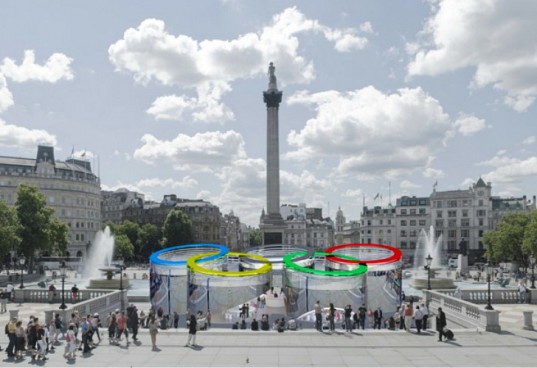
The winning entry was designed by Jose Carlos Cruz, Ines Guedes, Miguel Santos, and Antonio Cruz to look like the Olympic rings. The rings are extruded into rooms where visitors can find out information, relax, shop, or get a drink. The Olympic colors are used to in the rings on top of the buildings. The series of intersecting circular rooms incorporates recycled steel, while the rooftop holds solar panels that will generate power for the pavilion during the day.
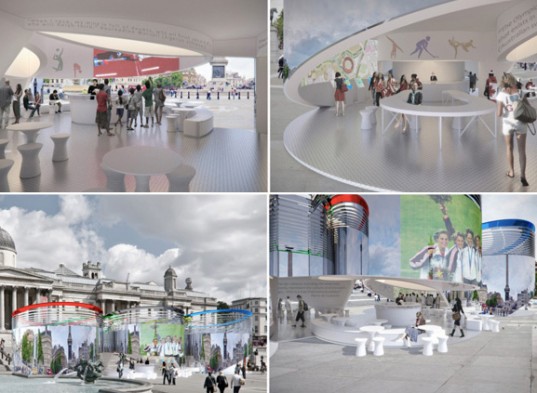
Second place went to a French architecture team from OH!SOM architects who proposed a pavilion composed of a series of floating balloons. The balloons serve multiple purposes by broadcasting the games, generating solar power for night lighting, cleaning the air of CO2, and providing shade. The project also sought to address the use of recycled materials and recycling trash from the games.
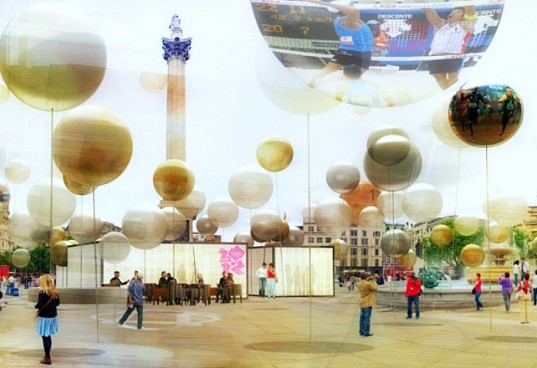
Third place was won by a US team from Dowling Duncan whose pavilion is an oragami version of a track. Made from ground up recycled running shoes, the track provides an interactive place to play and gather. The track and the building below it are oriented to maximize daylighting and natural ventilation from air-cooled by the fountains. Unfortunately, as great as these ideas are, the competition was purely for conceptual designs and the projects will not actually be built. The competition sought to “encourage and reward design excellence at a small-scale which integrates function, structure, details and the spirit of the games, as well as encourage the employment of sustainable design in all aspects of the proposal.”
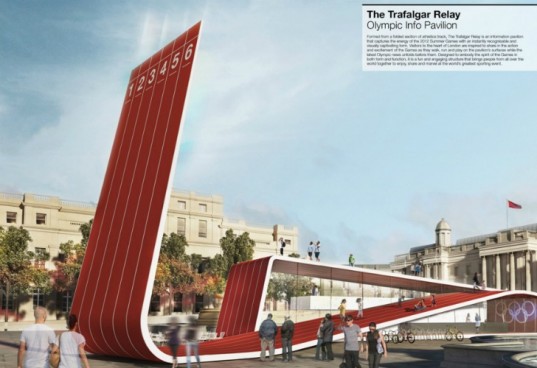
Source: inhabitat
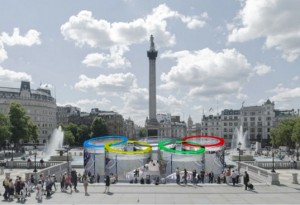
 Follow
Follow